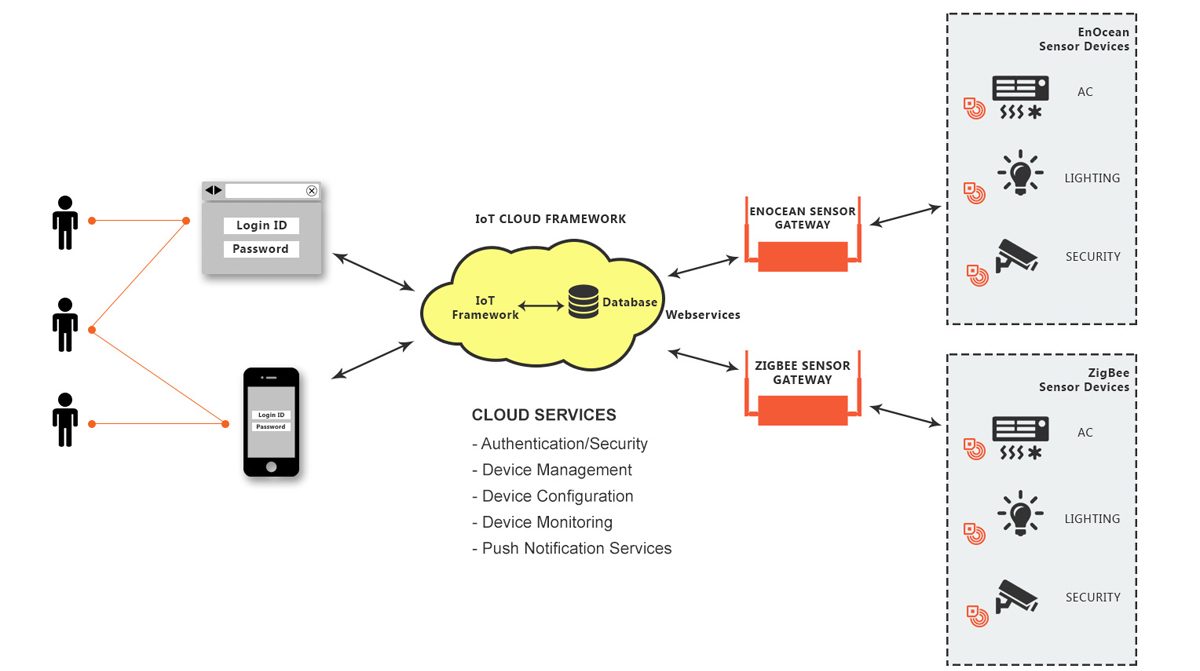This is part 2 of our series on decoding the components of the IoT ecosystem/set-up. The data flow starts when sensors fetch raw data from your devices and send it to the IoT gateway, as explained in Decoding how IoT works : Sensor Networks and IoT Gateways. Here is what happens next.
From the gateway, this data is sent to the cloud, where it’s made actionable, and finally to your mobile or desktop.
Cloud-based services and solutions
The cloud is an amazing thing—besides storing data, it’s where sense is derived from all this information, which can be then put to use, and you can give commands from web dashboard. How does all of this happen, and how can you make it work for you? Embitel’s experienced engineers explain.

Software engineer Omprakash Punumalli terms the cloud as the ‘brain’ of IoT. “Communication can happen (with some restrictions) without the gateway, but all data processing happens because of the cloud.” Raw data is transmitted to the cloud through MQTT protocol, on which machine learning algorithms and other big data analysis is performed, and information is derived.
What time are the lights switched on every day, at what temperature is the AC set regularly, how many hours has your appliance run, how much longer before the device is due for servicing—these are some of the useful pieces of actionable information the cloud can derive from the data, and make predictions for you.
This information is then transmitted to the mobile app or web dashboard using RESTful APIs and JSON query. “An adept engineer can apply the right algorithms or even write new ones to help you make the best use of the data in cloud, best suited to your needs,” says Om.
Smart solutions on mobile
Mayank Joshi specializes in working on mobile applications for IoT. “The app is not only a platform for the end-users to connect with, control and monitor the devices, but it is also the only touch-point to perform tasks like sending push notifications to users, and implementing location and proximity specific features like beacons,” explains Mayank.
Embitel’s team has succeeded in designing apps that have a universal look and feel across different devices (mobiles and tablets) and versions of the devices. The apps support a variety of features.
One can group events to run in tandem, such as turning off the lights at 5am, while turning on the hot water, opening the blinds and playing soft music—all aligned to, say, ‘good morning’ mode. One can equip them with beacon technology, so if you’re a garment retailer, your customer (who has your app on his phone) is alerted about the new discounts in the store when he comes within a specified proximity. If the cloud has gathered data on the run time of your appliance, the app will display a warning as the end of its life draws near. So while the primary role of the app is represent information, the kind of information it disseminates and the timely push notifications it can provide make all the difference.
Know more about Embitel’s IoT and mobility offerings for home automation and ecommerce
If you have any query/feedback, connect with us at sales@embitel.com to set-up a conversation!
Follow us on LinkedIn for more technology updates



